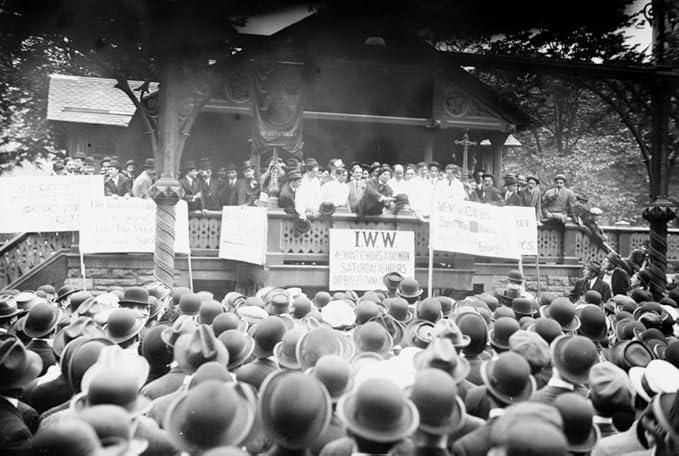This Day in Labor History: May 5, 1913

On May 5, 1913, barbers in New York City went on strike. This little known incident with not a lot of public information on it is quite interesting. Let’s put together what we can. I was unable to find anything written on it by scholars, which isn’t dispositive. Perhaps I missed something. But let’s see what we can dig up here.
There had been earlier efforts to organize New York’s barbers before this. In 1907, the American Federation of Labor tried to support an organizing effort in Harlem, but it failed. In 1913, the strike started in the Brownsville neighborhood of Brooklyn. The key issue was the work day, which could extend up to 92 hours a week and included working on Sundays. Workers wanted far shorter hours and they wanted Sundays off. Quite reasonable! On May 7, barbers started clashing with police in Brownsville during their street rallies. Reporters suggested up to 5,000 people were involved and that they started throwing vegetables at the cops.
By May 11, the New York Times was reporting on the strike. They credited it to the Industrial Workers of the World. This was probably true. By this time, Joseph Ettor had arrived on the scene. Ettor was one of the IWW’s most effective organizers and would become much more well known the next year when he was central in the organizing of the Lawrence “Bread and Roses” strike. There, the mill owners set up Ettor and other leading IWW organizers for murder as a way to bust the strike. It did not work and his case was quite famous at the time. The picture above is Ettor addressing the strikers.
Barbers marched into Manhattan, picking up disgruntled workers from many professions along the way, going over the Brooklyn Bridge. It picked up a bunch of Manhattan barbers, led by a barber named Frank Cancilleri, who was an IWW member. He actually owned a shop. But he claimed that he was in sympathy with the struggles of the working class and didn’t see the fact that he was an employer of a small shop like this to be a problem. That would be reasonably consistent with how the IWW actually operated, which was with a ton of ideological flexibility in actions, as opposed to their most ideological public statements. Given who led this, the strike was most successful among Italian barbers.
Led by Cancilleri, the strikers converged on the shop of an anti-union barber named Philip Mohr, on Third Avenue. He had seven barbers working, each with a patron in the chair. They called on him to close the shop. He refused. About 60 men gathered outside protesting. One threw a rock through his window. The cops came to Mohr’s rescue, but he refused to press charges, saying he feared for his life from the striking barbers. Or at least this is how the Times reported it. That newspaper was so anti-labor for the early decades of its existence that I hardly trust it as a source, but it is the information I was able to find here. In any case, after this the cops started beating up the barbers with their truncheons, because that’s what cops do.
One participant wrote to a local professional barbers journal, “I will say that on a certain bright morning in the month of May, I found that the entire barber industry was paralyzed. Nearly 13,000 workingmen were out on strike. Isn’t that a miracle? Thirteen thousand barbers on strike!”
The New York Tribune reported on this with some amusement, writing, “From Bushwick to Bay Ridge haggard men go about with the telltale blemish encroaching upon their visages like a noxious fungus. Half-shaved men slink about the alleys, avoiding the light of day.” The horror. The horror.
Although the strike did not succeed in bringing the revolution to the workers of New York, nor did it lead to a recognized union, barbers did succeed in lowering their work weeks to about 62 hours a week, which is still nuts but is not literally all day every day for peanuts. The strike ended about May 30, with about 2,300 barbers agreeing to return to work.
Well, that’s about what I can come up with. There’s still plenty for historians to write about! And maybe there’s something out there that I missed. But given what fragments of information I could find, I did the best I could here. If you know of something to add to this, let me know!
This is the 560th post in this series. Previous posts are archived here.


